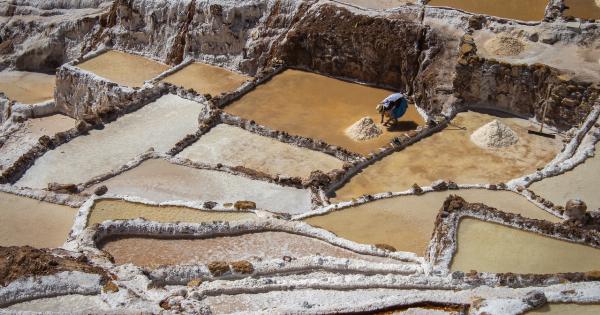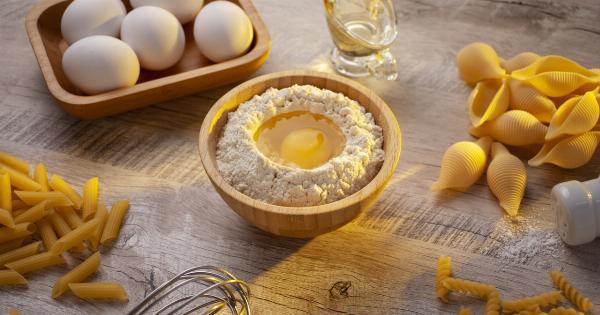As a parent, you try your best to ensure that your child eats a healthy and balanced diet. However, there might be a silent culprit lurking in their meals – salt.
Many parents are unaware of how much salt their child is consuming on a daily basis and the potential health risks associated with excessive salt intake. In this article, we will explore the hidden sources of salt in children’s meals and provide some tips on how you can reduce their salt intake for better health.
The problem with too much salt
While salt is an essential mineral that our bodies need in small amounts, consuming too much can lead to various health issues, especially in children.
Excessive salt intake has been linked to high blood pressure, heart disease, kidney problems, and even an increased risk of obesity. Children are especially vulnerable to these health problems as their bodies are still developing.
The hidden sources of salt
It’s surprising how much salt can be hidden in everyday foods that children consume. Some common sources of hidden salt include:.
1. Processed and packaged foods
Many processed and packaged foods, such as ready-to-eat meals, snacks, canned soups, and sauces, contain high levels of salt to enhance flavor and prolong shelf life.
These foods often seem harmless, but they can contribute significantly to your child’s daily salt intake.
2. Fast food and takeouts
It’s no secret that fast food and takeouts are notorious for their high salt content. Burgers, fries, pizzas, and other popular fast food items are typically loaded with salt to enhance taste and addictive flavors.
Regularly indulging in these foods can quickly push your child’s salt intake above recommended levels.
3. Bread and bakery products
Even seemingly innocent items like bread and bakery products can be surprisingly high in salt. Many commercial bread and bakery items are made with added salt for flavor and to aid in the rising process.
Always check food labels for low-sodium options or consider making homemade versions of these products.
4. Cheese and other dairy products
Cheese and other dairy products, while providing essential nutrients, can also be significant sources of salt. Some varieties of cheese, especially processed cheese, contain high amounts of salt.
Be mindful of the amount of cheese your child consumes and opt for low-sodium options when possible.
5. Condiments and sauces
Condiments and sauces, such as ketchup, mayonnaise, soy sauce, and salad dressings, are often loaded with salt.
Since these items are frequently used in small quantities, it’s easy to overlook their contribution to your child’s daily salt intake. Check food labels for reduced-sodium alternatives or consider making your own homemade versions of these condiments.
6. Snack foods
Snack foods like chips, pretzels, and crackers are a favorite among children. Unfortunately, these snacks usually come with a high salt content.
Encourage healthier snack options like fresh fruits, vegetables, and homemade popcorn seasoned with herbs instead.
7. Cured and processed meats
Cured and processed meats, including bacon, sausages, and deli meats, can contain excessive amounts of salt. These meats are often preserved with salt to enhance flavor and extend shelf life.
Opt for fresh, lean meats and limit the consumption of cured and processed varieties.
8. Soups and broths
Many store-bought soups and broths are loaded with salt to enhance taste and act as preservatives. Always check the sodium content on food labels and opt for low-sodium varieties or consider making homemade soups and broths using fresh ingredients.
9. Hidden salt in beverages
While we often associate salt intake with food, it’s essential to be mindful of hidden salts in beverages as well. Some sports drinks, flavored waters, and even fruit juices can contain added salt for taste and electrolyte balance.
Encourage your child to drink water or opt for unsweetened beverages to limit their salt intake.
10. The importance of reading food labels
The best way to monitor and reduce your child’s salt intake is by reading food labels. Pay attention to the sodium content per serving size and aim for products with lower salt percentages.
Choose fresh, unprocessed foods whenever possible and utilize herbs and spices to enhance flavor instead of relying solely on salt.
Tips to reduce your child’s salt intake
Here are some practical tips to help you reduce your child’s salt intake:.
1. Cook meals from scratch
By cooking meals from scratch using fresh ingredients, you have complete control over the amount of salt used. Experiment with herbs, spices, and other seasonings to add flavor without excessive salt.
2. Limit processed and packaged foods
Avoid relying on processed and packaged foods as much as possible. They tend to be high in salt and often lack essential nutrients. Opt for whole foods and cook meals in batches to save time and effort.
3. Pack homemade lunches
Prepare homemade lunches for your child to take to school instead of relying on pre-packaged snacks or cafeteria meals. This way, you can ensure that their meals are low in salt and well-balanced.
4. Encourage healthy snacking
Keep a variety of fresh fruits, vegetables, and homemade snacks readily available for your child to snack on. This will reduce their reliance on high-salt snack foods.
5. Be cautious with condiments
Be mindful of the salt content in condiments. Use them sparingly or try making your own homemade versions using low-sodium ingredients.
6. Involve your child in meal planning
Involve your child in meal planning and grocery shopping. Teach them about the importance of a balanced diet and how to read food labels to make better choices.
7. Educate your child about salt
Teach your child about the role of salt in their diet and the potential health risks of excessive salt intake. This knowledge will empower them to make healthier food choices.
8. Set a good example
Children often mirror their parents’ eating habits. Set a good example by consuming low-salt meals and snacks yourself. Make it a family effort to reduce salt intake for better health.
9. Stay hydrated
Encourage your child to drink plenty of water throughout the day. Staying hydrated helps flush out excess salt from the body and promote overall health.
10. Consult a healthcare professional
If you are concerned about your child’s salt intake or have a family history of certain health conditions, consult a healthcare professional for personalized advice and guidance.
Conclusion
Awareness of the hidden sources of salt in your child’s meals is crucial for their overall well-being.
By understanding where the excess salt comes from and taking proactive measures to reduce their intake, you can help your child develop healthy eating habits that will benefit them in the long run. Remember, small changes in their diet can make a significant difference in their health and future.






























